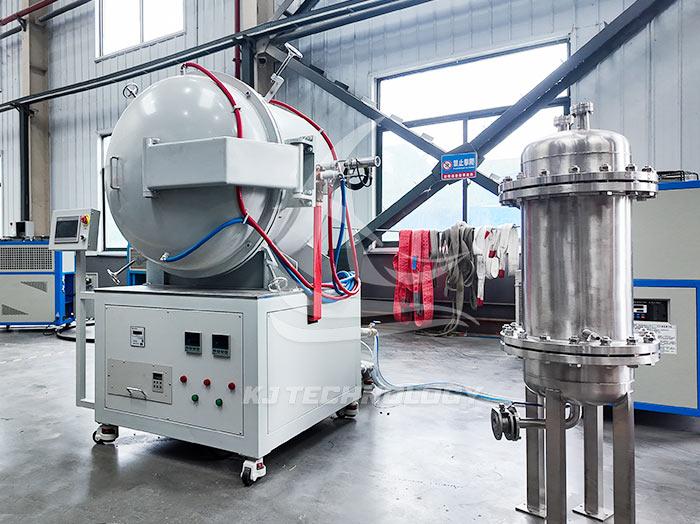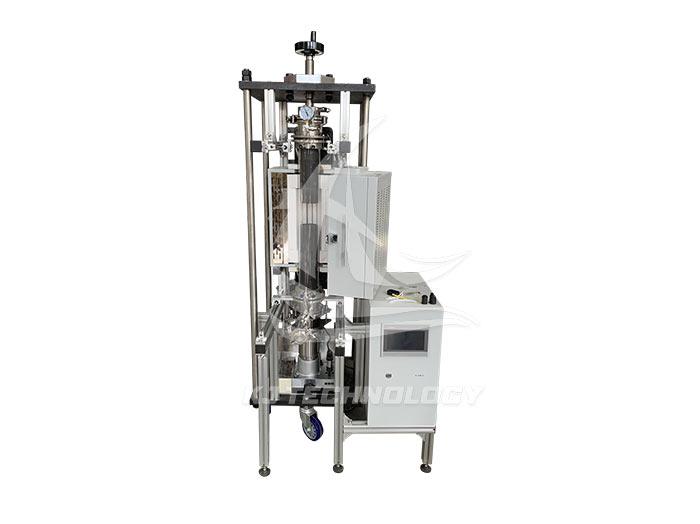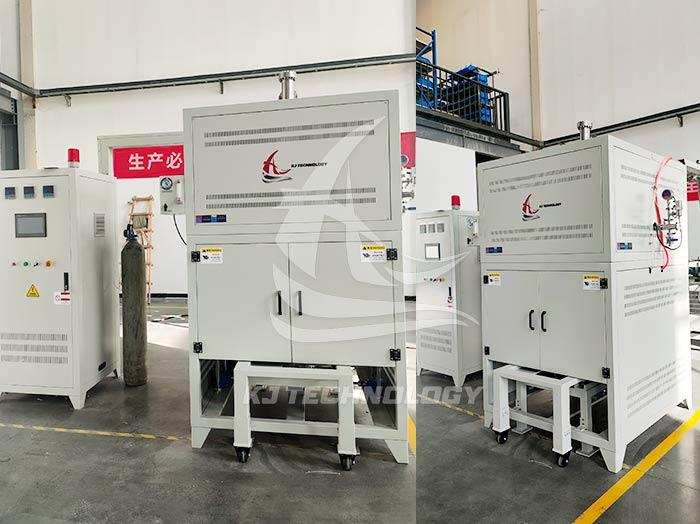The vacuum degree of the small vacuum furnace used in the experiment cannot be drawn up
 10-21-2025 Author: KJ technology
10-21-2025 Author: KJ technology
The vacuum degree of the small vacuum furnace used in the experiment cannot be pumped up, which may be caused by factors such as leakage, decreased pump pumping speed, and contamination of the furnace body or workpiece. The following are the specific reasons and corresponding solutions:
Leakage issue
Reason: The sealing components are aging, corroded, or damaged, the pipeline connections are loose, and the electromagnetic valves, pipe joints, vacuum pump suction valves, and sealing gaskets around the working chamber are leaking air.
Solution:
Check and replace seals: Carefully inspect all seals, including furnace door seals, sealing gaskets at pipeline connections, etc. If aging, cracking, or damaged seals are found, they should be replaced in a timely manner to ensure good sealing.
Tighten pipeline connections: Check if the pipeline connections are loose, and if they are loose, use appropriate tools to tighten them.
Repair or replace valves: Check components such as solenoid valves and pipe joints, and promptly repair or replace any faults or damages found.
Using leak detection methods to locate leakage points:
External leakage detection: For larger leakage points, flame method can be used. First, create a vacuum, then use a candle or lighter to gradually search near the suspicious point. If the flame is found to be offset towards the leak point, the leak point can be found.
Internal leakage detection: The detection of internal leakage is relatively complex and requires zoning and investigation from different vacuum working areas of the vacuum furnace. After the vacuum system reaches a certain pressure value, start the winding and evaporation systems separately, and observe whether the reading of the vacuum gauge rises after a brief decrease, which can preliminarily determine the direction of the internal leakage point. Internal leakage often occurs on equipment with water cooling points. If the pumping speed of the mechanical pump is significantly low, the vacuum gauge reading is low, the mechanical pump oil quickly emulsifies, and the iron-based components in the vacuum chamber are visibly corroded, it can be basically inferred that internal leakage exists. At this point, the cavity should be cleaned first, and then cooling water should be introduced. Carefully check if there are any wet spots in the water pipeline, which are the leakage points.
Pump pumping speed decreases
Reason: pump oil pollution, insufficient or too thin, poor or damaged operation of vacuum pump, pump overheating, and expansion of components leading to insufficient clearance.
Solution:
Clean the vacuum pump and replace with new oil: Regularly clean the vacuum pump to remove impurities and pollutants inside the pump, and replace with new vacuum pump oil to ensure that the cleanliness and viscosity of the pump oil meet the requirements.
Replace with a new pump: If the vacuum pump is severely damaged or cannot be repaired, it should be replaced with a new pump in a timely manner.
Strengthen the cooling of the pump: Ensure that the cooling system of the vacuum pump is working properly to avoid overheating and causing a decrease in pumping speed.
Check the power supply and repair or replace damaged parts: Check if the power supply is normal to ensure that the vacuum pump receives stable power supply. At the same time, regularly inspect the parts of the vacuum pump and promptly repair or replace any damaged or worn parts.
Furnace or workpiece contamination
Reason: There are impurities such as oil stains and oxide scales on the surface of the furnace body or workpiece, which cause a decrease in vacuum degree.
Solution:
Cleaning the furnace body and workpieces: Before loading, the furnace body and workpieces should be thoroughly cleaned to remove impurities such as oil stains and oxide scales on the surface, in order to prevent pollution of the furnace environment.
Oven treatment: For new furnaces or furnaces that have not been used for a long time, oven treatment should be carried out to remove moisture and volatile substances from the furnace body and increase the vacuum degree.
Other possible reasons and solutions
Suction valve O-ring detachment: Remove the vacuum tube from the pump nozzle, remove the suction nozzle, take out the compression spring and suction valve, gently stretch the O-ring several times, re insert it into the groove, and then install it.
Oil return valve blockage: Remove the oil return valve, clean it, and remove the blockage.
Blockage of cooling water pipeline: Check whether the cooling water pipeline is unobstructed, ensure sufficient cooling water supply, and clean the blockage.








